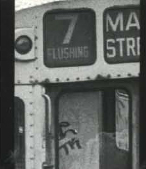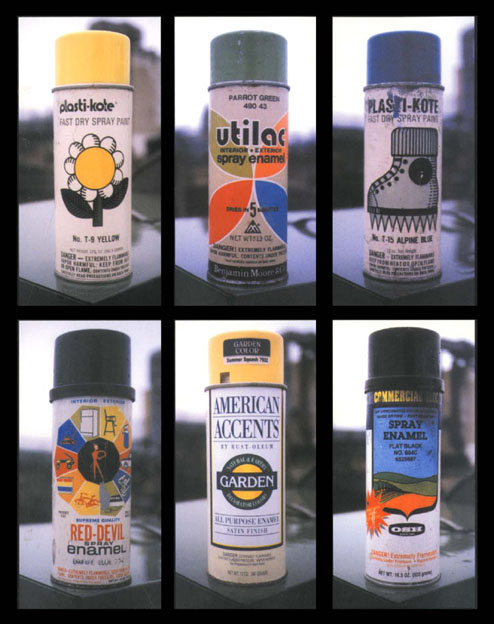

Freight Monikers look like the oldest form of modern graffiti, extending the history of an individual writing an alias in a unique style to the early part of this century. Of course those marks, like Kilroy’s, were made by adults, and incurred no real risk, but the marriage of name and picture on a train in a way that combined to make an icon is right on track with what was to come later. Cholo writing then left its first consistently stylized mark on youth in L.A. in the 1940s (possibly even earlier). The All-City Individual movement began when the spray-paint markings of “Bobby Beck In ′59” began to appear all over the Philadelphia highways. These three modes of marking—Freight, Cholo, and walls—are still in effect, but its the third that keeps expanding in number of practitioners and influence in the surrounding culture. The first king of walls? Philly superstar Cornbread had props like übercop Frank Rizzo before the ′60s were out. So what was the original motivation for the original king? Cornbread started to write to attract the attentions of a girl at his school named Cynthia. Love is the original motivation for everything. First the hallways, then her locker. Apparently this wasn’t enough to get her attention, so he wrote along the route that her bus took, then he went into the bus barn and wrote all over every bus. Soon enough he got the girl and she got to compete with his “magnificent obsession”—writing. She lost. In addition to his introduction of the crown (“every king should have one”) and the crew (“Delta Phi Soul, a fraternity of our own”) the Cornbread saga has plenty of angles that continue to influence the growth of the culture that surrounds graffiti today. There was and is a pop culture that celebrated the idea of a writer expressing himself, the media who reported on the fascination (and in doing so burnished the image of the outlaw artist), and finally a commodification of the writing, but not before the writer’s influence manifests itself in a younger writer who furthers the form. This is a three-point rotation that keeps the world of graffiti spinning in its orbit to this day. Cornbread had a movie based on his life (Cornbread, Earl, and Me, which, after ‘Bread got a lawyer, became a movie about two kids playing basketball on the Southside of Chicago), there were headlines in the newspaper after there were rumors of his death (greatly exaggerated, natch), and a student whose stride would take him all the way to New York City. This student, Top Cat, told Cornbread that he couldn’t compete in Philly and set off to find a block to call his own, on 126th Street in Manhattan. He left town with the next generation of script, a style Philly called “Gangster Style,” Chicago called “Old English,” and New York would call “Broadway Elegant,” and the style wars began. Style was born in Philly and took a Greyhound to Port Authority. There’s no doubt that it flourished in the fertile New York soil, but you can see in the Philly photos from 1969–71 a highly evolved print style that the New York scene didn’t possess at the time.
In Philly, there was a determination to keep graffiti grounded in the print that never diminished. Writers shunned those they called “artists,” resulting in a scene that places unique importance on the act of writing prints even to this day of fifty-can productions. The best artists never got the respect they enjoyed in other cities unless they put in a great amount of work, which is so hard to do while you’re trying to create art. Razz in Philadelphia and VFR in New York embody the “real writer” feeling. VFR is more New York in his appreciation for the painterly aspects, but both agree The LAW (Razz’s crew) is that you have to have a WE KILL SHIT (VFR’s crew) mentality. Actally the similarites only begin there, though separated by cities, styles, traditions, and age, they have almost identical things to say about the method of getting over: further evidence that the essence of graffiti is more science than art.
